Forums
- Forums
- Duggy's Reference Hangar
- Misc Library
- Pan Am "The secret weapon"
Pan Am "The secret weapon"
Post a reply
- Go to Previous topic
- Go to Welcome
- Go to Introduce Yourself
- Go to General Discussion
- Go to Screenshots, Images and Videos
- Go to Off topic
- Go to Works in Progress
- Go to Skinning Tips / Tutorials
- Go to Skin Requests
- Go to IJAAF Library
- Go to Luftwaffe Library
- Go to RAF Library
- Go to USAAF / USN Library
- Go to Misc Library
- Go to The Ops Room
- Go to Made in Germany
- Go to Campaigns and Missions
- Go to Works in Progress
- Go to Juri's Air-Raid Shelter
- Go to Campaigns and Missions
- Go to Works in Progress
- Go to Skinpacks
- Go to External Projects Discussion
- Go to Books & Resources
-
12 years agoSun Sep 26 2021, 11:41amDuggy
 Main AdminThey crouched in the excavation, watching the swarm of Japanese planes dive again and again on the nearby buildings, feeling the earth shake when the bombs exploded, ducking as debris and shrapnel rained down on them.
Main AdminThey crouched in the excavation, watching the swarm of Japanese planes dive again and again on the nearby buildings, feeling the earth shake when the bombs exploded, ducking as debris and shrapnel rained down on them.
It was unreal. Only two hours earlier, as the seven-man crew of Pan Am's Philippine Clipper, they had been on a routine flight to Guam. Then came the unexpected message:
JAPANESE ATTACKING PEARL HARBOR ... RETURN TO WAKE AT ONCE ... CLIPPER NEEDED FOR PATROL DUTY.
Now they were watching with anger and frustration as Pan Am's Wake Island base was reduced to smoking rubble.
Suddenly a Japanese fighter spotted the big Martin 130 flying boat tied to the dock. It was an easy target. Swooping down the plane open fire, raking the defenseless Clipper from nose to tail with machine gun bullets.
In five minutes it was all over. The Japanese left as abruptly as they had come. Nine Pan Am base employees had been killed, all base facilities destroyed. Hurriedly the crew rounded up the rest of the Pan Am personnel who had been stationed there and loaded them onto the Clipper. They knew the Japanese would be back. Soon.
Riddled with 96 bullet holes, the crippled and overloaded Philippine Clipper made two unsuccessful tries to take off, then on the third attempt managed to struggle into the air. Three days later, after stops at Midway and Honolulu, it was in San Francisco, where the crew gave one of the first eyewitness accounts of the Pacific War.
Another Clipper didn't escape. Anchored in Hong Kong harbor on December 7 (December 8 Honk Kong time), fueled for a flight to Manila, it was hit by incendiary bullets from attacking Japanese fighters, caught fire, and burned to the water line. The Hong Kong Clipper II had only been in Pacific service for seven weeks.
A third Pan Am flying boat, the Pacific Clipper out of San Francisco, was on its way from New Caledonia to Auckland when it got the news of the Japanese attack. Deciding against trying to make it back over an ocean now patrolled by an enemy, it refueled in New Zealand and then headed west. Following a route close to the equator, it flew across Australia, India, the Middle East, across Africa and the South Atlantic, along the northern coast of South America and then on to New York. On the morning of January 6th, a startled officer in the control tower of New York's LaGuardia Airport heard on the loudspeaker: "Pacific Clipper, inbound from Auckland, New Zealand. Due arrive Pan American Marine Terminal at LaGuardia in seven minutes." The incredible month-long, 31,500-mile journey was the longest ever made by a commercial aircraft and the first around the world. The Pacific Clipper had flown over three oceans, made 18 stops in 12 different countries, and crossed the equator six times.
Pan Am's experiences during the early days of World War II were unmatched by any other civil organization, but there was no time to dwell on them. With the entrance of the United States into the war, virtually all of Pan Am's equipment and personnel were assigned, directly or indirectly, to the war effort. Pan Am, the nation's only overseas airline, had a very special responsibility and it called on its 9,000 employees to respond. They rose to the challenge.
Pan Am's pilots and navigators were called in to advise the military on the techniques of overseas flying and to start training crews. At the Pan Am Navigational School near Miami, General Jimmy Doolittle's navigators tranied for his bombing raid. At Pan Am bases, many departments started working around the clock. Doubling and tripling of maintenance personnel resulted in a 50 percent cut in servicing time and a 100 percent increase in aircraft utilization. Most Clippers flew twice as many hours, twice as often as they had in peacetime. The plush interiors of the B-314 flying boats were stripped to wartime austerity and priority cargo was packed into every available inch of space. The exteriors were camouflaged by painting them with drab sea-gray paint. The Pan Am crews now wore khaki when under Army command and green when flying for the Navy.
During the first year of the war records were shattered and reshattered. Feats that would have been considered miraculous in normal times were now all in a day's work. In 1942 Pan Am Clippers made 1,219 Atlantic crossings. The amount of cargo carried increased sharply?from 16,500 pounds in 1941 to over three million pounds in 1942!
It seemed that transatlantic flight crews were in the air more than they were on the ground. Captain H. E. Gray, who was to serve as president of Pan Am in the 1960's, made nine crossings in nine days. Pan Am pilot Joe Hart made 12 in 13 days. Captain R. O. D. Sullivan made a total of 103 crossings of the Atlantic in 1942. When he became the first person in history to make a hundred aerial crossings, he wasn't even aware of it. Bringing his oil-stained, camouflaged Clipper down on Long Island Sound, he had to be told of his achievement by Pan Am's ground personnel. Asked to describe his feelings at reaching this aviation milestone he answered, "Well, I do feel a little hungry."
Although the Japanese had taken over all of its Central Pacific bases except Honolulu, Pan Am nevertheless continued to be active in Asia. Pan Am's affiliate on the mainland of China, the China National Aviation Corporation, made a heroic evacuation of some 275 U.S., British and Chinese civilians from Hong Kong, accomplished by pilots and ground crews working without rest for 72 straight hours. In April, 1942, Pan Am played a key role in evacuating more than 4,000 civilians and wounded soldiers from Burma, at the same time flying in supplies for the forces struggling to hold back the Japanese invaders-much of it accomplished in violent monsoon weather and under constant threats from enemy aircraft.
To expedite shipments to the Asian and African war zones, Pan Am formed a new Africa-Orient Division. Its exploits are legendary. The famous "Cannonball" route was established; stretching 11,500 miles from Miami to South America, across the Atlantic to Africa and from there to India, it was the longest, fastest, big-scale air transport route in history?and an important supply line for the entire Far East. At its peak, seven flights a day in each direction were being scheduled, and one day there were 16 Pan Am-operated C-54 transport planes over the ocean at the same time. This steady flow of arms, ammunition and supplies was later given a large share of the credit for driving the Japanese out of Burma.
The Africa-Orient Division also flew supplies to China oner the Himalayas, a route known as the "Hump"?one of the wildest, most rugged areas on earth with the high mountain peaks and almost constantly turbulent weather. Frequently planes were forced to struggle up to 20,000 feet to clear the peaks, sometimes without oxygen for the crew, often fighting 100-mph winds. Violent updrafts and downdrafts tossed planes around like leaves. Ice was severe. The ever-present enemy fighters also took their toll. One Pan Am plane came back with over 3,000 bullet holes. For three years the flights over the "Hump" were the sole source of U.S. and other outside help to otherwise-isolated China.
In addition to its regular flights across the Atlantic and the Pacific, and into Africa and the Orient, Pan Am allocated aircraft to special, often secret, missions. A Pan Am B-314 flew President Roosevelt and his advisors
Franklin Roosevelt celebrated his sixty-first birthday aboard the Dixie Clipper on January 30th,1943 while over the Caribbean, on his return trip from his secret meeting in Casablanca with Winston Churchill and Charles De Gaulle.
to the summit conference at Casablanca. Other Pan Am aircraft carried top U.S. generals and admirals, Britain's Prime Minister Winston Churchill, the Netherland's Queen Wilhelmina, Greece's King George and scores of other high-ranking diplomats and military men. Pan Am flew more than 700 of these special missions.
Although there were many acts of heroism and moments of high drama, Pan Am's major contribution throughout the war was doing what it had learned to do so expertly in peacetime: the building and outfitting of overseas air bases and the fast, dependable transportation of people and cargo over long distances.
During the war years Pan Am built some 50 airports in 15 different countries, almost all of them in remote, often hostile areas. As the largest air transport contractor to the army and the navy, Pan Am flew over 90 million aircraft miles for the government
And made more than 18,000 ocean crossings. In the first years of the war, before the operation was taken over by the U.S. Air Transport Command, it ferried 542 bombers and transports to the war zones. Pan Am also trained more then 5,000 military pilots and thousands of mechanics, and established schools and procedures for the training of many more thousands.
And Pan Am paid the price: more then 200 employees gave their lives, an unknown number were imprisoned in enemy prison camps, at least a dozen aircraft were lost.
Not many people know about Pan Am's role in World War II. There was almost no publicity. There were no medals, no glory. It was all done in the line of duty. Pan Am's Herculean efforts to keep supply lines open throughout the world was one of America's most valuable secret weapons.
When the war ended, Pan Am could look back with pride on a job well done. Its unique experience, gained during years of pioneering air transportation in Latin America and across the Atlantic and Pacific, had been the basis for the country's entire wartime international transport operations?and significantly influenced the war's outcome
I came across this a very detailed account of "Pacific Clippers" round the world saga.
Engines: Four (4) 1,600 hp (1,192 kW) Wright R-2600 Twin Cyclone (1,192 kw), 14 cylinder, air-cooled, radial engines.
Wing Span: 152 ft. (46.33 m.)
Length: 106 ft (32.31 m.)
Max Take Off Weight: 84,000 lb. (38,102 kg.)
Max level speed: 199 mph (320 km/h)
Cruising speed: 184 mph (296 km/h)
Range: 5,200 miles (8369 km)
First flight: June 7, 1938
Ceiling: 19,600 feet
Accommodation: 10 crew, 74 passengers
December 7, 1941 The first blush of dawn tinged the eastern sky and sent its rosy fingers creeping onto the flight deck of the huge triple-tailed flying boat as she cruised high above the South Pacific. Six days out of her home port of San Francisco, the Boeing 314 was part of Pan American Airways' growing new service that linked the far corners of the Pacific Ocean. With veteran captain Robert Ford in command, the Pacific Clipper, carrying 12 passengers and a crew of ten was just a few hours from landing in the harbor at Auckland, New Zealand.
The calm serenity of the flight deck early on this spring morning was suddenly shattered by the crackling of the radio. Radio Operator John Poindexter clamped the headset to his ears as he deciphered the coded message. His eyes widened as he quickly wrote the characters on the pad in front of him. Pearl Harbour had been attacked by Japanese war planes and had suffered heavy losses; the United States was at war. The stunned crew looked at each other as the implications of the message began to dawn. They realized that their route back to California was irrevocably cut, and there was no going back. Ford ordered radio silence, and then posted lookouts in the navigator's blister; two hours later, the Pacific Clipper touched down smoothly on the waters of Auckland harbour. Their odyssey was just beginning.
The crew haunted the overwhelmed communications room at the US Embassy in Auckland every day for a week waiting for a message from Pan Am headquarters in New York. Finally they received word -- they were to try and make it back to the United States the long way: around the world westbound. For Ford and his crew, it was a daunting assignment. Facing a journey of over 30,000 miles, over oceans and lands that none of them had ever seen, they would have to do all their own planning and servicing, scrounging whatever supplies and equipment they needed; all this in the face of an erupting World War in which political alliances and loyalties in many parts of the world were uncertain at best. Their first assignment was to return to Noumea, back the way they had come over a week earlier. They were to pick up the Pan American station personnel there, and then deliver them to safety in Australia. Late on the evening of December 16th, the blacked out flying boat lifted off from Auckland ha rbour and headed northwest through the night toward Noumea. They maintained radio silence, landing in the harbor just as the sun was coming up. Ford went ashore and sought out the Pan Am Station Manager. "Round up all your people," he said. "I want them all at the dock in an hour. They can have one small bag apiece."
The crew set to work fuelling the airplane, and exactly two hours later, fully fuelled and carrying a barrel of engine oil, the Clipper took off and pointed her nose south for Australia.
It was late in the afternoon when the dark green smudge of the Queensland coast appeared in the windscreen, and Ford began a gentle descent for landing in the harbor at Gladstone. After offloading their bewildered passengers, the crew set about seeing to their primary responsibility, the Pacific Clipper. Captain Ford recounted, "I was wondering how we were going to pay for everything we were going to need on this trip. We had money enough for a trip to Auckland and back to San Francisco, but this was a different story. In Gladstone a young man who was a banker came up to me and out of the blue said, 'How are you fixed for money?' 'Well, we're broke!' I said. He said, 'I'll probably be shot for this,' but he went down to his bank on a Saturday morning, opened the vault and handed me five hundred American dollars. Since Rod Brown, our navigator, was the only one with a lock box and a key we put him in charge of the money. That $500 financed the rest of the trip all the way to New York.
Ford planned to take off and head straight northwest, across the Queensland desert for Darwin, and then fly across the Timor Sea to the Dutch East Indies (now Indonesia), hoping that Java and Sumatra remained in friendly hands. The next day, as they droned into the tropical morning the coastal jungle gradually gave way to great arid stretches of grassland and sand dunes. Spinnifex and gum trees covered the landscape to the horizon. During the entire flight to Darwin the crew didn't see a river big enough to set down the big flying boat should anything go wrong. Any emergency would force them to belly land the airplane onto the desert, and their flight would be over.
They approached the harbour at Darwin late in the afternoon. Massive thunderheads stretched across the horizon, and continuous flashes of lightning lit up the cockpit. The northernmost city in Australia, Darwin was closest to the conflict that was spreading southward like a brushfire. A rough frontier town in the most remote and primitive of the Australian territories, it was like something out of a wild west movie. After they had landed, the Pacific Clipper crew was offered a place to shower and change; much to their amusement their "locker room" turned out to be an Australian Army brothel.
Ford and his crew set about fuelling the airplane. It was a lengthy, tiresome job. The fuel was stored in five gallon jerry cans, each one had to be hauled up over the wing and emptied into the tanks; it was past midnight before they were finished. They managed a few hours of fitful sleep before takeoff, but Ford was anxious to be under way. News of the progress of the Japanese forces was sketchy at best. They were fairly certain that most of the Dutch East Indies was still in friendly hands, but they could not dally.
Early the next morning they took off for Surabaya, fourteen hundred miles to the west across theTimor Sea. The sun rose as they droned on across the flat turquoise sea; soon they raised the eastern islands of the great archipelago of east Java. Rude thatch-roofed huts dotted the beaches; the islands were carpeted with the lush green jungle of the tropics.
Surabaya lay at the closed end of a large bay in the Bali Sea. The second largest city on the islandof Java, it was guarded by a British garrison and a squadron of Bristol Beaufort fighters. As the Pacific Clipper approached the city, a single fighter rose to meet them; moments later it was joined by several more. The recognition signals that Ford had received in Australia proved to be inaccurate, and the big Boeing was a sight unfamiliar to the British pilots. The crew tensed as the fighters drew closer. Because of a quirk in the radio systems, they could hear the British pilots, but the pilots could not hear the Clipper. There was much discussion among them as to whether the flying boat should be shot down or allowed to land. At last the crew heard the British controller grant permission for them to land, and then add, "If they do anything suspicious, shoot them out of the sky!" With great relief, Ford began a very careful approach.
As they neared the harbor, Ford could see that it was filled with warships, so he set the Clipper down in the smooth water just outside the harbour entrance. "We turned around to head back," Ford said. "There was a launch that had come out to meet us, but instead of giving us a tow or a line, they stayed off about a mile and kept waving us on. Finally when we got further into the harbour they came closer. It turned out that we had landed right in the middle of a minefield, and they weren't about to come near us until they saw that we were through it!"
When they disembarked, the crew of the Pacific Clipper received an unpleasant surprise; they were told that they would be unable to refuel with 100 octane aviation gas. What little existed there was severely rationed, and was reserved for the military. There was automobile gas in abundance however, and Ford was welcome to whatever he needed. He had no choice. The next leg of their journey would be many hours over the Indian Ocean , and there was no hope of refuelling elsewhere. The flight engineers, Swede Roth and Jocko Parish, formulated a plan that they hoped would work. They transferred all their remaining aviation fuel to the two fuselage tanks, and filled the remaining tanks to the limit with the lower octane automobile gas.
"We took off from Surabaya on the 100 octane, climbed a couple of thousand feet, and pulled back the power to cool off the engines," said Ford. "Then we switched to the automobile gas and held our breaths. The engines almost jumped out of their mounts, but they ran. We figured it was either that or leave the airplane to the Japs"
They flew north-westerly across the Sunday Straits, paralleling the coast of Sumatra. Chasing the setting sun, they started across the vast expanse of ocean. They had no aviation charts or maps for this part of the world; the only navigational information available to the crew was the latitude and longitude of their destination at Trincomalee, on the island of Ceylon (now Sri Lanka). Using this data, and drawing from memory, Rod Brown was creating his own Mercator maps of South Asia. Ford was not only worried about finding the harbor , he was very concerned about missing Ceylon altogether. He envisioned the Clipper droning on over India, lost and low on fuel, unable to find a body of water on which to land.
As they neared the island they could see a cloud bank ahead. Ford said, "There was some low scud, so we descended. We wanted the maximum available visibility to permit picking up landfall at the earliest moment -- we didn't want to miss the island. All of a sudden there it was, right in front of us, a Jap submarine! We could see the crew running for the deck gun. Let me tell you we were pretty busy getting back into the scud again!"
Ford jammed the throttles of the Clipper forward to climb power, the engines complaining bitterly . Their 150 mph speed soon had them well out of range of the sub's guns, and the crew heaved a sigh of relief. It would be difficult to determine who was the more surprised; the Japanese submarine commander or the crew of the Clipper, startled out of their reverie after the long flight.
It was another hour until they reached the island, and the Boeing finally touched water in the harbor at Trincomalee. The British Forces stationed there were anxious to hear what Ford and his crew had to report from the war zone to the east, and the crew was duly summoned to a military meeting. Presiding was a pompous Royal Navy Commodore who informed Ford in no uncertain terms that he doubted Ford would know a submarine if it ran over him. Ford felt the hackles rise on the back of his neck. He realized that he could not afford to make an enemy of the British military; the fate of the Pacific Clipper rested too heavily in their hands. He swallowed hard and said nothing.
It was Christmas Eve when they began the takeoff from Ceylon and turned the ship again to the northwest. The heavily loaded Boeing struggled for altitude, labouring through the leaden humid air. Suddenly there was a frightening bang as the number three engine let go. It shuddered in its mount, and as they peered through the windscreen the crew could see gushes of black oil pouring back over the wing. Ford quickly shut the engine down, and wheeled the Clipper over into a 180 degree turn, heading back to Trincomalee. Less than an hour after takeoff the Pacific Clipper was back on the waters of Trincomalee harbor. The repairs to the engine took the rest of Christmas Eve and all of Christmas Day. One of the engine's eighteen cylinders had failed, wrenching itself loose from its mount, and while the repair was not particularly complex, it was tedious and time-consuming. Finally early in the morning of December 26th, they took off from Ceylon for the second time. All day they droned across the lush carpet of the Indian subcontinent, and then cut across the north-eastern corner of the Arabian Sea to their landing in Karachi, touching down in mid-afternoon.
The following day, bathed and refreshed, they took off and flew westward across the Gulf of Oman toward Arabia. After just a bit over eight routine hours of flying, they landed in Bahrain, where there was a British garrison.
Another frustration presented itself the following morning as they were planning the next leg of their journey. They had planned to fly straight west across the Arabian peninsula and the Red Sea into Africa, a flight that would not have been much longer than the leg they had just completed from Karachi.
"When we were preparing to leave Bahrain, we were warned by the British authorities not to fly across Arabia," said Ford. "The Saudis had apparently already caught some British fliers who had been forced down there. The natives had dug a hole, buried them in it up to their necks, and just left them."
They took off into the grey morning and climbed through a solid overcast. They broke out of the clouds into the dazzling sunshine, and the carpet of clouds below stretched westward to the horizon. "We flew north for about twenty minutes," Ford said, "then we turned west and headed straight across Saudi Arabia . We flew for several hours before there was a break in the clouds below us, and damned if we weren't smack over the Mosque at Mecca! I could see the people pouring out of it, it was just like kicking an anthill. They were probably firing at us, but at least they didn't have any anti-aircraft."
The Pacific Clipper crossed the Red Sea and the coast of Africa in the early afternoon with the Saharan sun streaming in the cockpit windows. The land below was a dingy yellowish brown, with nothing but rolling sand dunes and stark rocky outcroppings. The only sign of human habitation was an occasional hut; every so often they flew over small clusters of men tending livestock who stopped and shielded their eyes from the sun, staring up at the strange bird that made such a noise. The crew's prayers for the continued good health of the four Wright Cyclones became more and more fervent. Should they have to make an emergency landing here, they would be in dire straits indeed.
Later in the afternoon they raised the Nile River, and Ford turned the ship to follow it to the confluence of the White and Blue Niles, just below Khartoum. They landed in the river, and after they were moored the crew went ashore to be greeted by the now familiar hospitality of the Royal Air Force. Ford's plan was to continue southwest to Leopoldville in the Belgian Congo and begin their South Atlantic crossing there. He had no desire to set out across the Sahara; a forced landing in that vast trackless wasteland would not only render the aircraft forever immobile, but the crew would surely perish in the harshness of the desert.
Early the next morning they took off from the Nile for Leopoldville . This was to be a particularly long overland flight, and they wanted to leave plenty of daylight for the arrival. They would land on the Congo River at Leopoldville, and from there would strike out across the South Atlantic for South America.
The endless brown of the Sudan gave way to rolling green hills, and then rocky crests that stretched across their path. They flew over native villages and great gatherings of wildlife. Herds of wildebeest, hundreds of thousands strong, stampeded in panic as the Clipper roared overhead. The grassland soon turned to jungle, and they crossed several small rivers, which they tried to match to their maps. Suddenly, ahead they saw a large river, much bigger and wider than others they had crossed, and off to their right was a good-sized town. The river had to be the mighty Congo, and the town was Bumba, the largest settlement on the river at that point. From their maps they saw that they could turn and follow the river downstream to Leopoldville. They had five hundred miles to fly.
Late in the afternoon they raised the Congolese capital of Leopoldville . Ford set the Boeing down gently onto the river, and immediately realized the strength of the current. He powered the ship into the mooring, and the crew finally stepped ashore. It was like stepping into a sauna. The heat was the most oppressive they had yet encountered; it descended on them like a cloak, sapping what energy they had left.
A pleasant surprise awaited them, however, when two familiar faces greeted them at the dock. A Pan American Airport Manager and a Radio Officer had been dispatched to meet them, and Ford was handed a cold beer. "That was one of the high points of the whole trip," he said.
After a night ashore they went to the airplane the next morning prepared for the long over-water leg that would take them back to the western hemisphere. The terrible heat and humidity had not abated a bit when the hatches were finally secured and they swung the Clipper into the river channel for the takeoff. The airplane was loaded to the gunnels with fuel, plus the drum of oil that had come aboard at Noumea. It was, to put it mildly, just a bit overloaded. They headed downstream into the wind, going with the six-knot current. Just beyond the limits of the town the river changed from a placid downstream current into a cataract of rushing rapids; pillars of rocks broke the water into a tumbling maelstrom. Ford held the engines at takeoff power, and the crew held their breath while the airplane gathered speed on the glassy river. The heat and humidity, and their tremendous gross weight were all factors working against them as they struggled to get the machine off the water befor e the cataracts. Ford rocked the hull with the elevators, trying to get the Boeing up on the step. Just before they would enter the rapids and face certain destruction, the hull lifted free. The Pacific Clipper was flying, but just barely. Their troubles were far from over, however. Just beyond the cataracts they entered the steep gorges; it was as though they were flying into a canyon. With her wings bowed, the Clipper staggered, clawing for every inch of altitude.
The engines had been at take-off power for nearly five minutes and the their temperatures were rapidly climbing above the red line; how much more abuse could they take? With agonizing slowness the big Boeing began to climb, foot by perilous foot. At last they were clear of the walls of the gorge, and Ford felt he could pull the throttles back to climb power. He turned the airplane toward the west and the Atlantic. The crew, silent, listened intently to the beat of the engines. They roared on without a miss, and as the airplane finally settled down at their cruising altitude Ford decided they could safely head for Brazil, over three thousand miles to the west.
The crew felt revived with new energy, and in spite of their fatigue, they were excitedly optimistic. Against all odds they had crossed southern Asia and breasted the African continent. Their airplane was performing better than they had any right to expect, and after their next long ocean leg they would be back in the hemisphere from which they had begun their journey nearly a month before. The interior of the airplane that had been home to them for so many days was beginning to wear rather thin. They were sick of the endless hours spent droning westward, tired of the apprehension of the unknown and frustrated by the lack of any real meaningful news about what was happening in a world besieged by war. They just wanted to get home.
After being airborne over twenty hours, they landed in the harbor at Natal just before noon. While they were waiting for the necessary immigration formalities to be completed, the Brazilian authorities insisted that the crew disembark while the interior of the airplane was sprayed for yellow fever. Two men in rubber suits and masks boarded and fumigated the airplane.
Late that same afternoon they took off for Trinidad, following the Brazilian coast as it curved around to the northwest. It wasn't until after they had departed that the crew made an unpleasant discovery. Most of their personal papers and money were missing, along with a military chart that had been entrusted to Navigator Rod Brown by the US military attach in Leopoldville, obviously stolen by the Brazilian "fumigators."
The sun set as they crossed the mouth of the Amazon, nearly a hundred miles wide where it joins the sea. Across the Guineas in the dark they droned, and finally at 3 AM the following morning they landed at Trinidad. There was a Pan Am station at Port of Spain, and they happily delivered themselves and their weary charge into friendly hands.
The final leg to New York was almost anti-climactic. Just before six on the bitter morning of January 6th, the control officer in the Marine Terminal at La Guardia was startled to hear his radio crackle into life with the message, "Pacific Clipper, inbound from Auckland, New Zealand, Captain Ford reporting. Overhead in five minutes."
In a final bit of irony, after over thirty thousand miles and two hundred hours of flying on their epic journey, the Pacific Clipper had to circle for nearly an hour, because no landings were permitted in the harbor until official sunrise. They finally touched down just before seven, the spray from their landing freezing as it hit the hull. No matter -- the Pacific Clipper had made it home.
The significance of the flight is best illustrated by the records that were set by Ford and his crew. It was the first round-the-world flight by a commercial airliner, as well as the longest continuous flight by a commercial plane, and was the first circumnavigation following a route near the Equator (they crossed the Equator four times.) They touched all but two of the world's seven continents, flew 31,500 miles in 209 hours and made 18 stops under the flags of 12 different nations. They also made the longest non-stop flight in Pan American's history, a 3,583 mile crossing of the South Atlantic from Africa to Brazil.
As the war progressed, it became clear that neither the Army nor the Navy was equipped or experienced enough to undertake the tremendous amount of long distance air transport work required. Pan American Airways was one of the few airlines in the country with the personnel and expertise to supplement the military air forces. Captain Bob Ford and most of his crew spent the war flying contract missions for the US Armed Forces. After the war Ford continued flying for Pan American, which was actively expanding its routes across the Pacific and around the world. He left the airline in 1952 to pursue other aviation interests.
The Crew of Pacific Clipper: Captain Robert Ford, First Officer John H. Mack, Second Officer/Navigator Roderick N. Brown, Third Officer James G. Henriksen, Fourth Officer John D. Steers, First Engineer Homans K. "Swede" Roth, Second Engineer John B. "Jocko" Parish, First Radio Officer John Poindexter*, Second Radio Officer Oscar Hendrickson, Purser Barney Sawicki, Asst. Purser Verne C. Edwards.
* Poindexter was originally scheduled to accompany the Pacific Clipper as far as Los Angeles, and then return to San Francisco; he had even asked his wife to hold dinner that evening. In Los Angeles, however, the regularly scheduled Radio Officer suddenly became ill, and Poindexter had to make the trip himself. His one shirt was washed in every port that the Pacific Clipper visited.
A nice video.
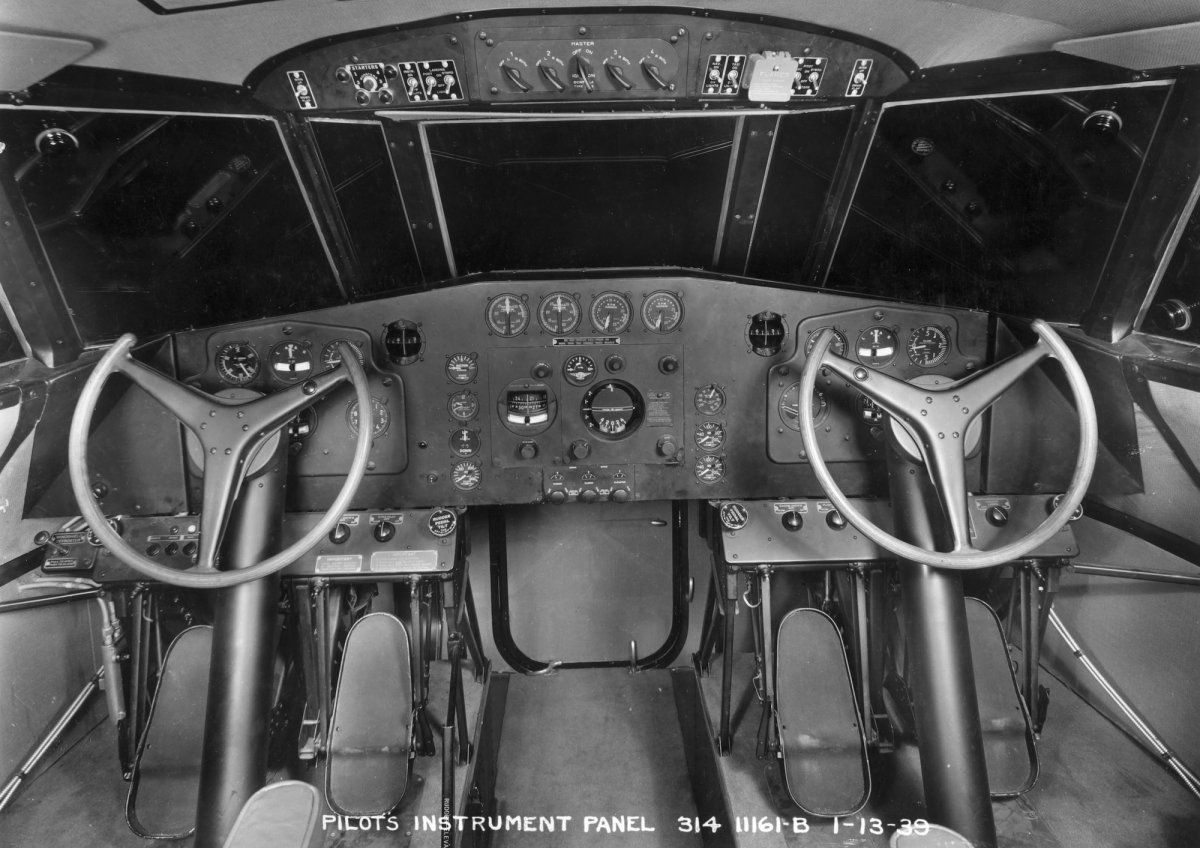

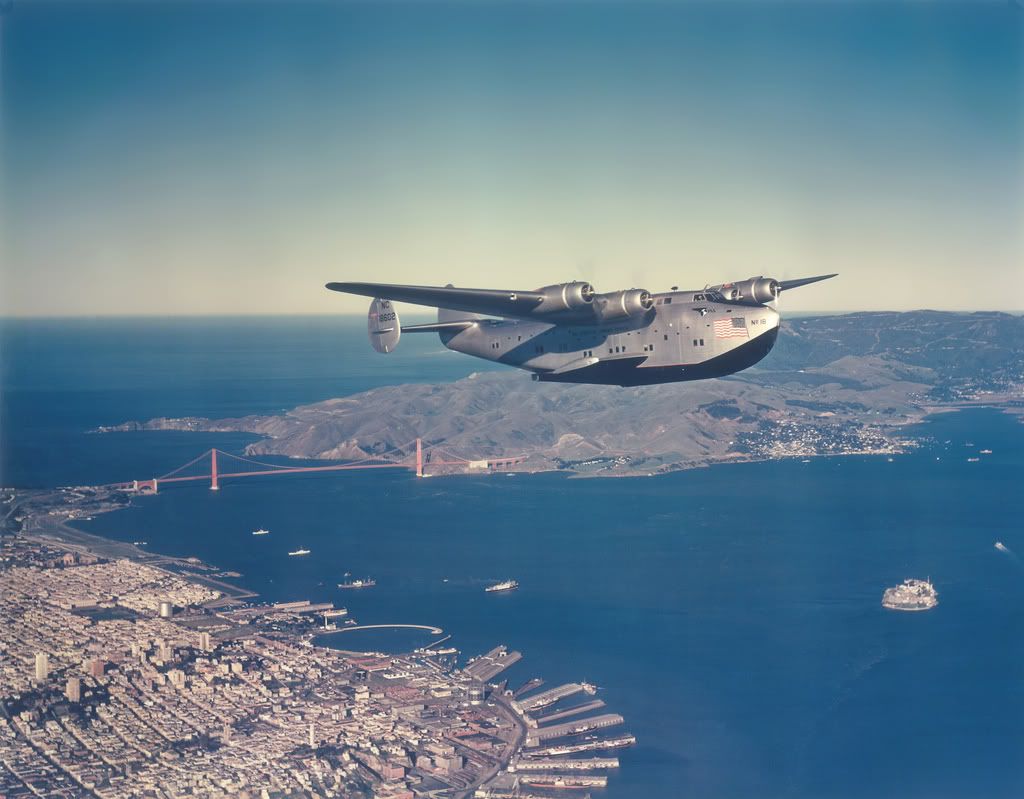
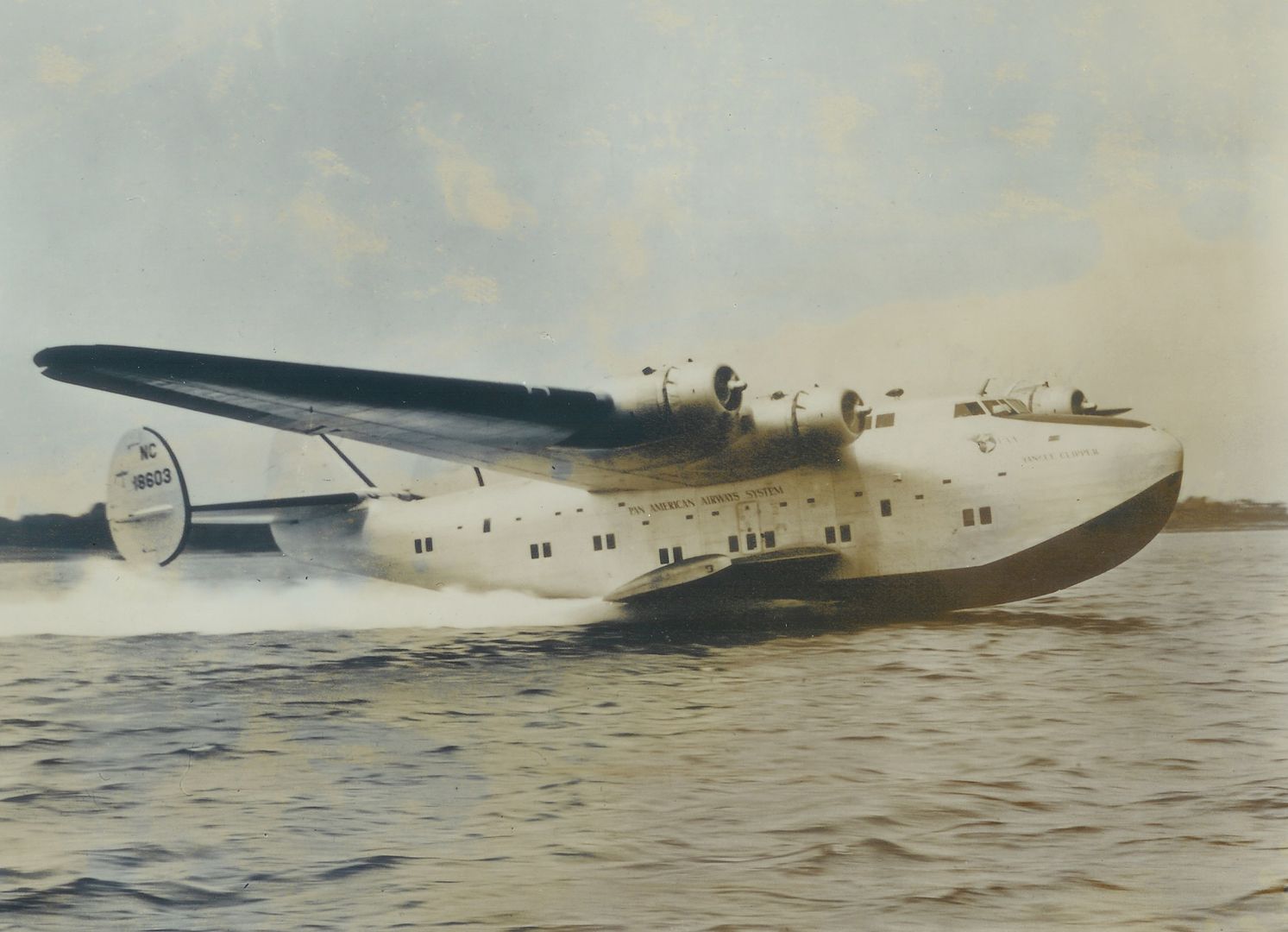
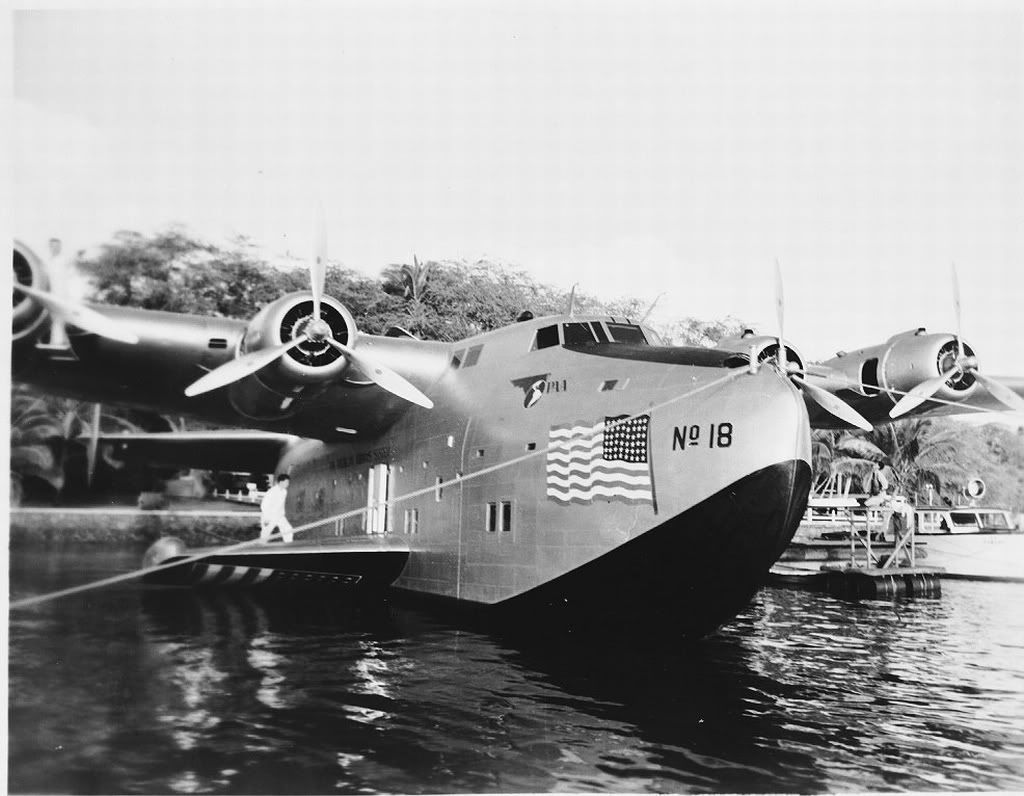
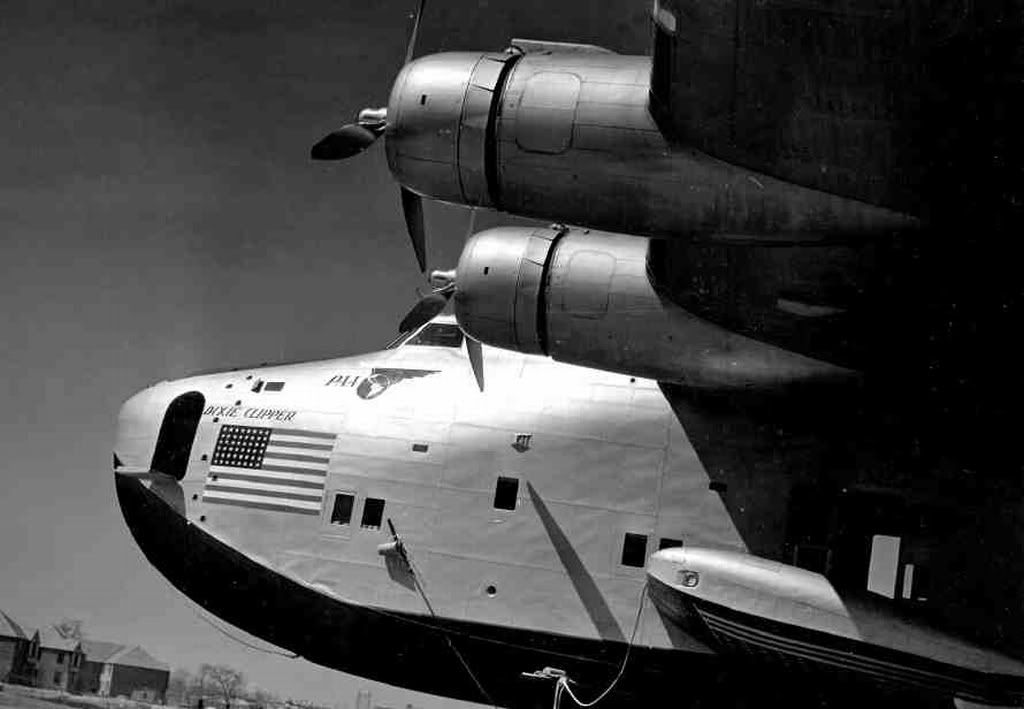





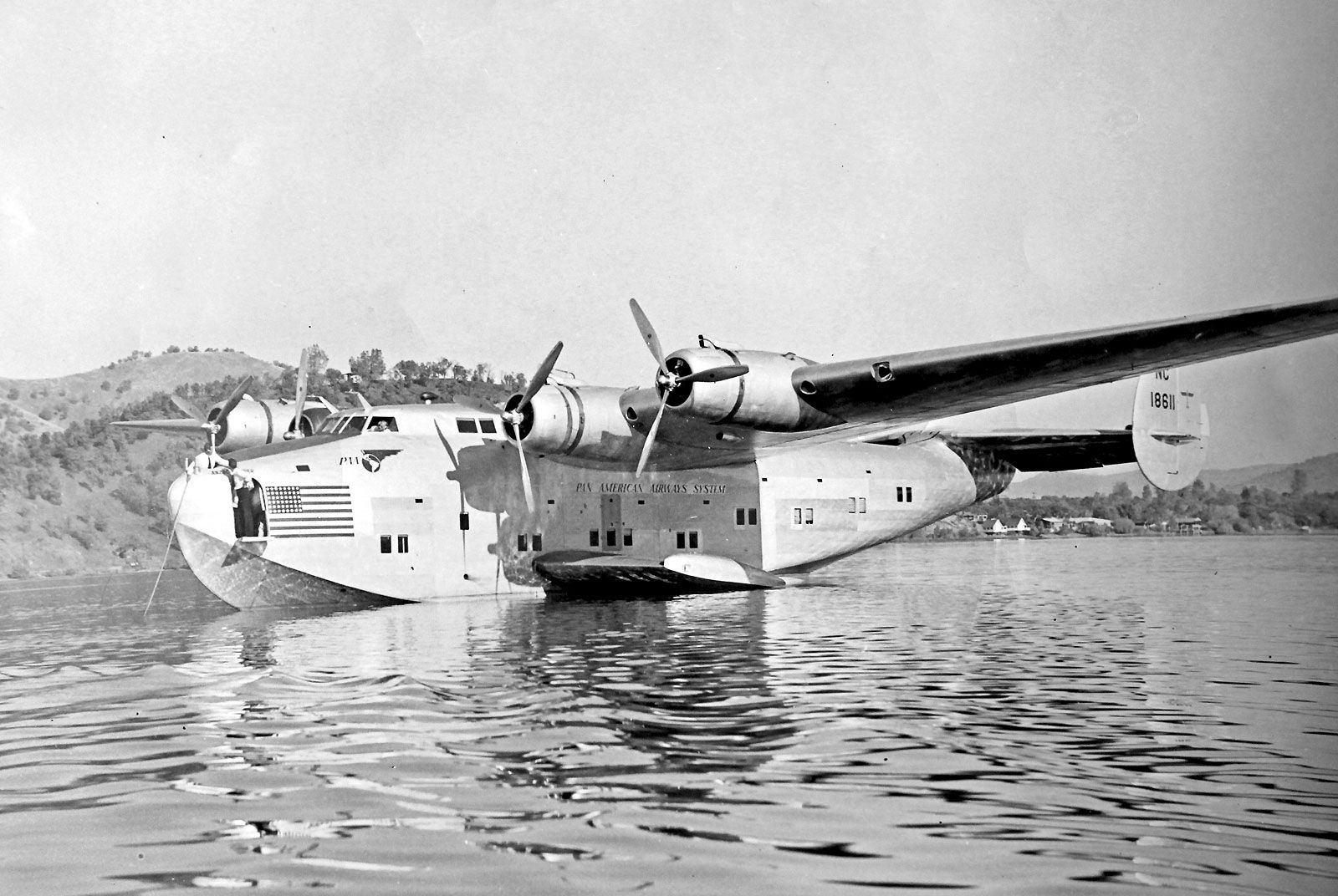


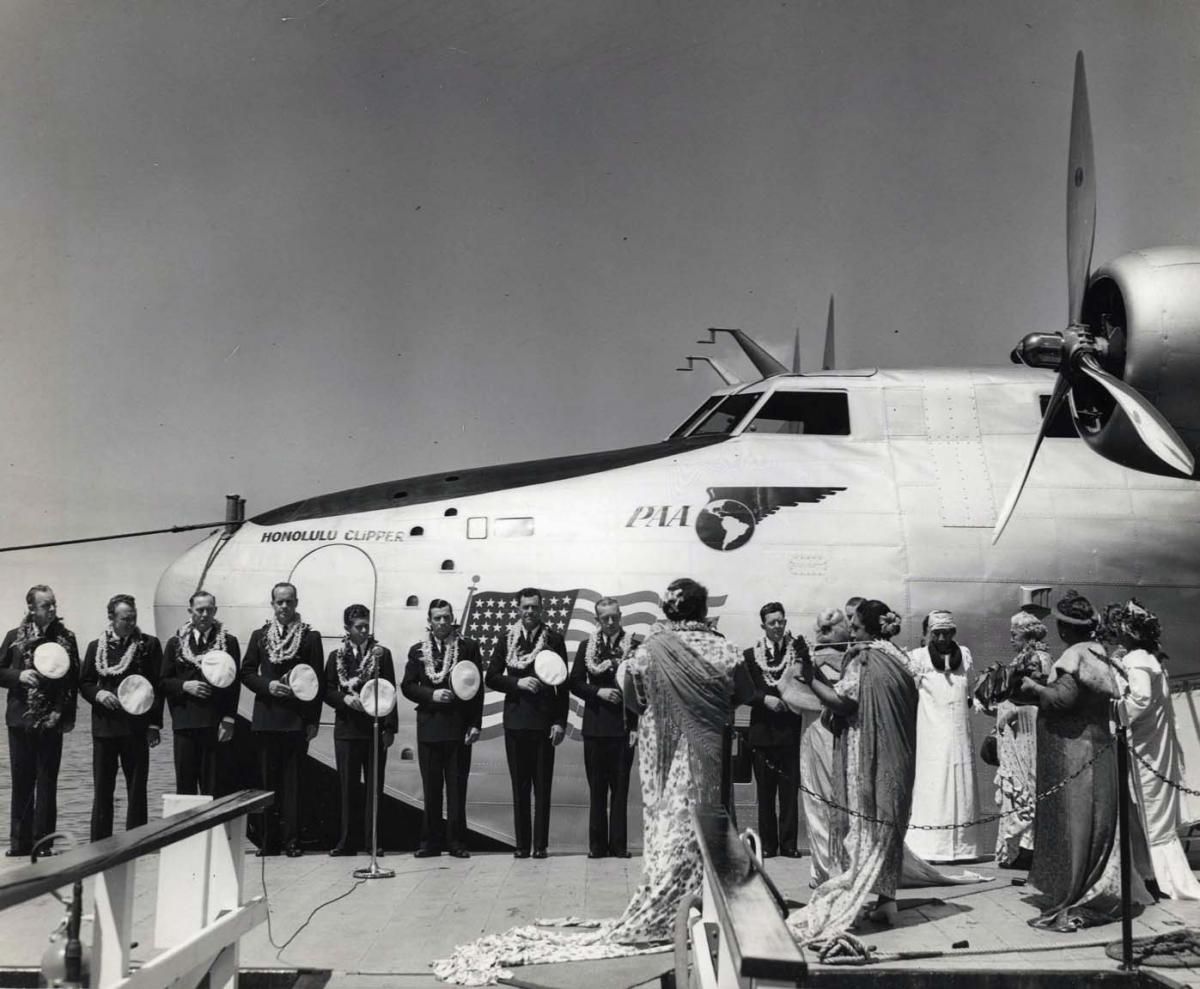
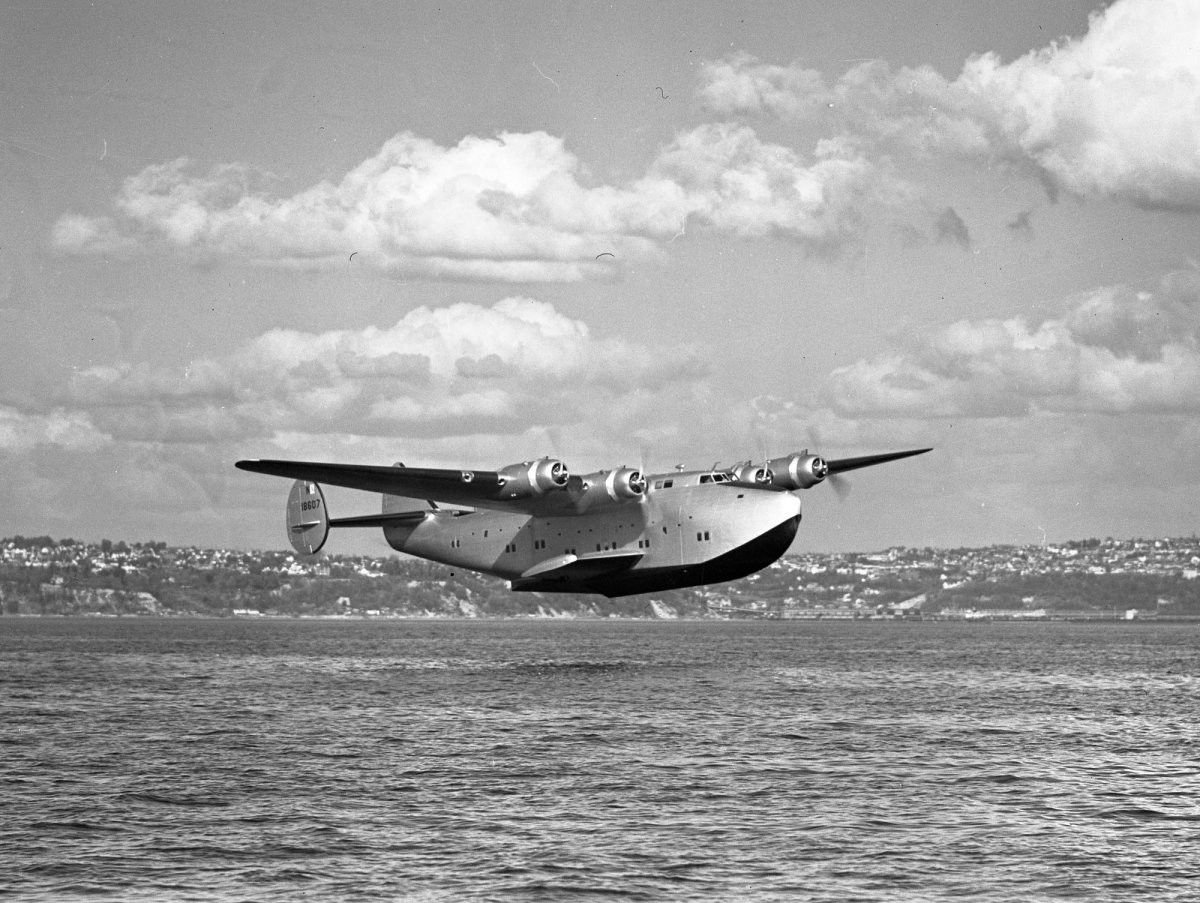
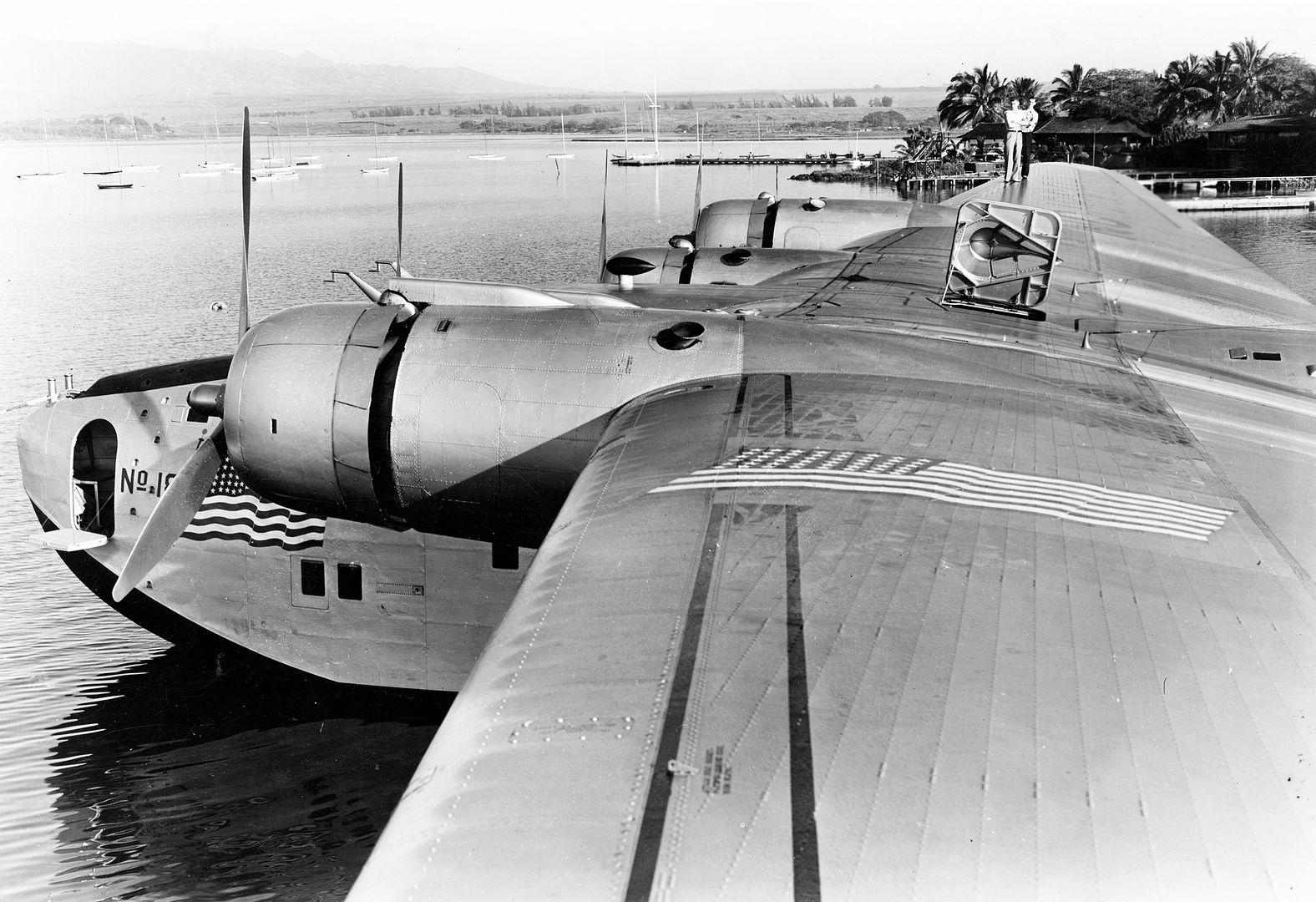

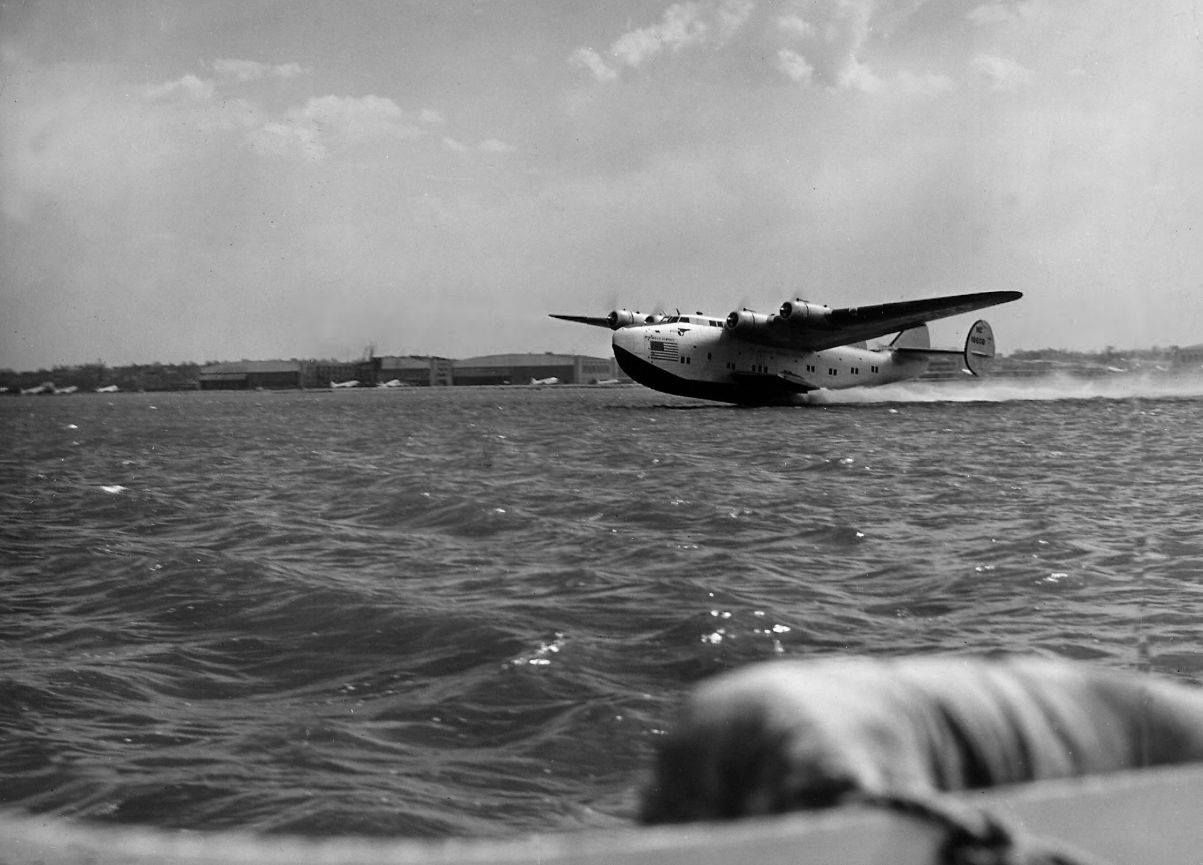
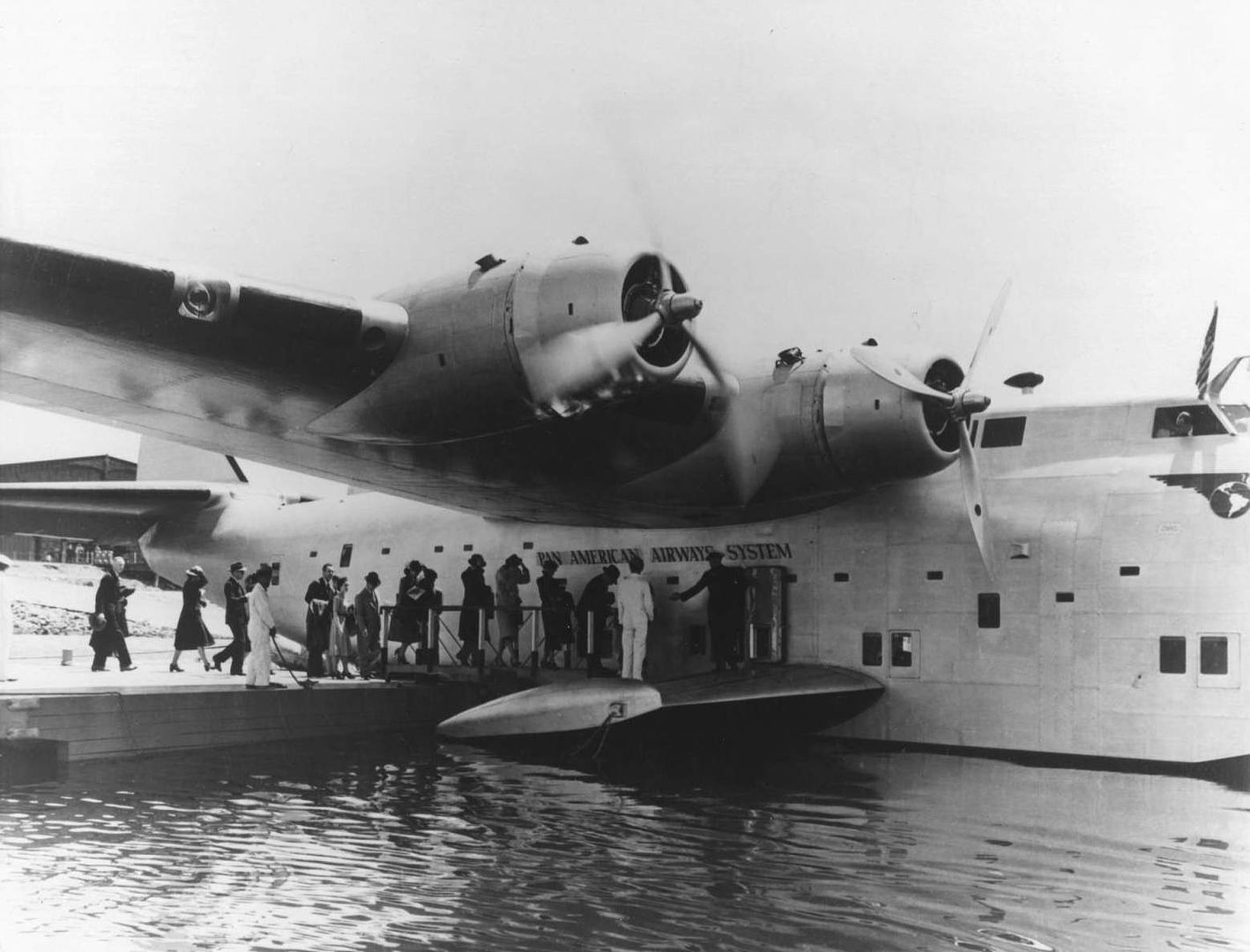

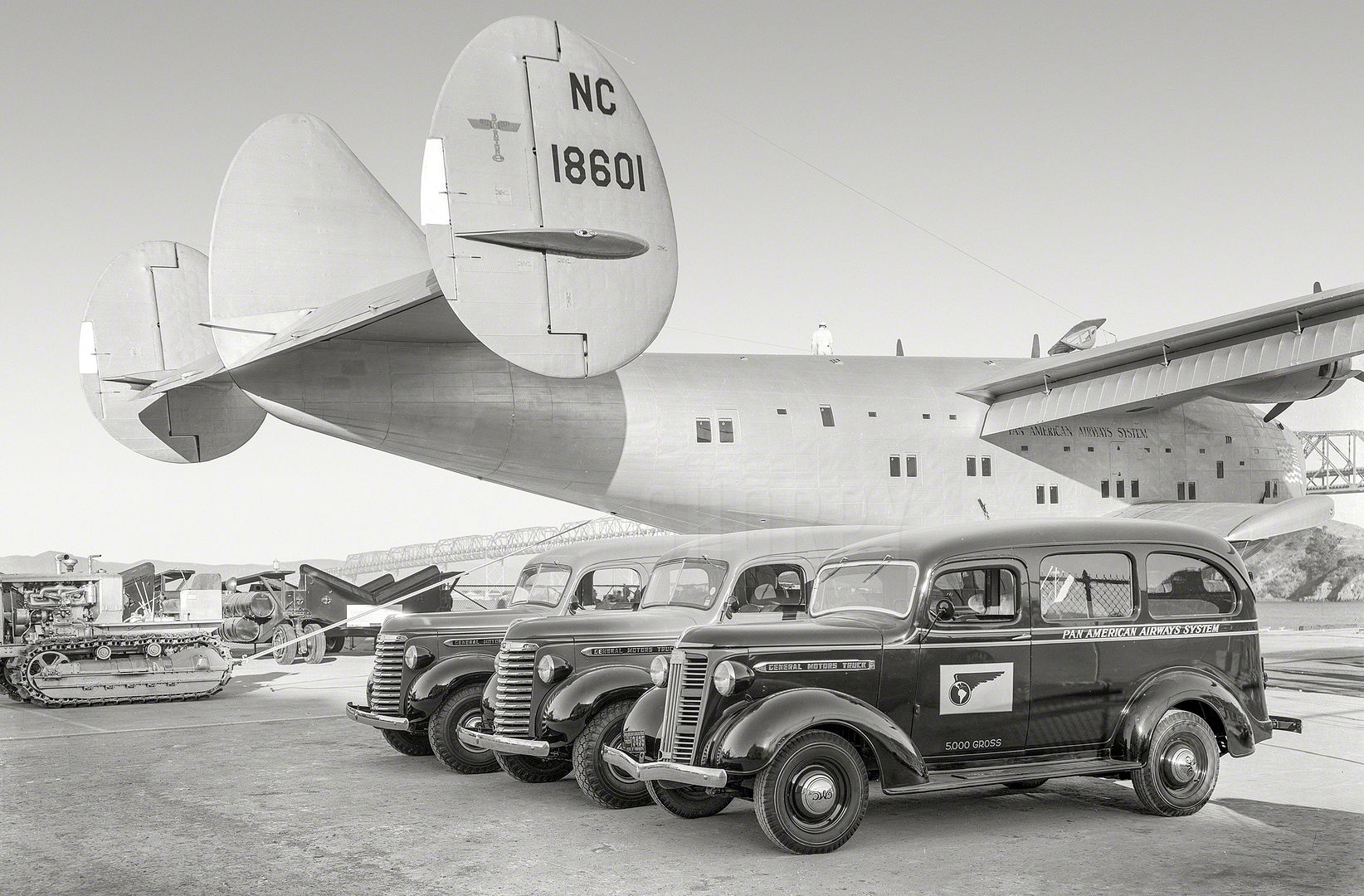
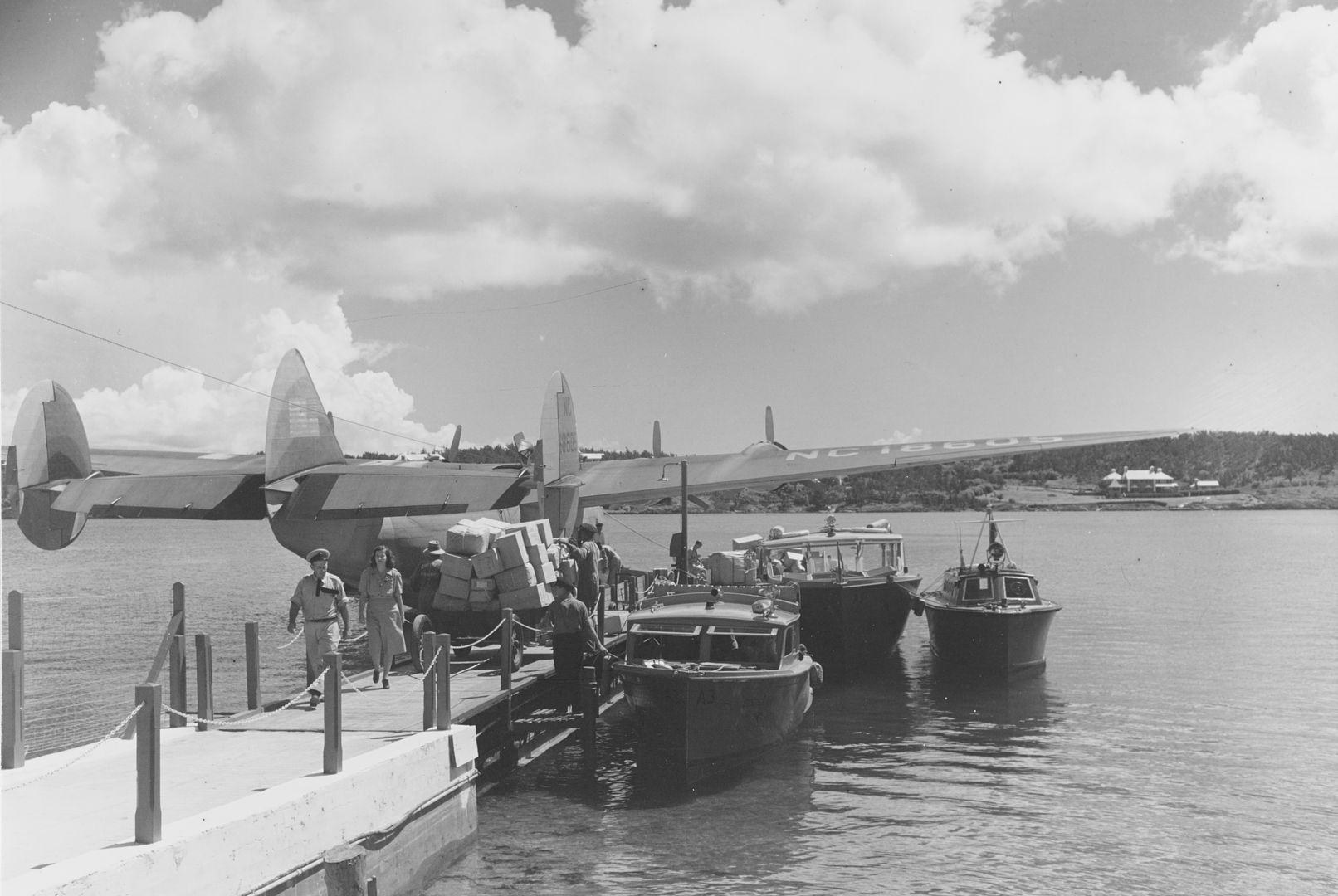
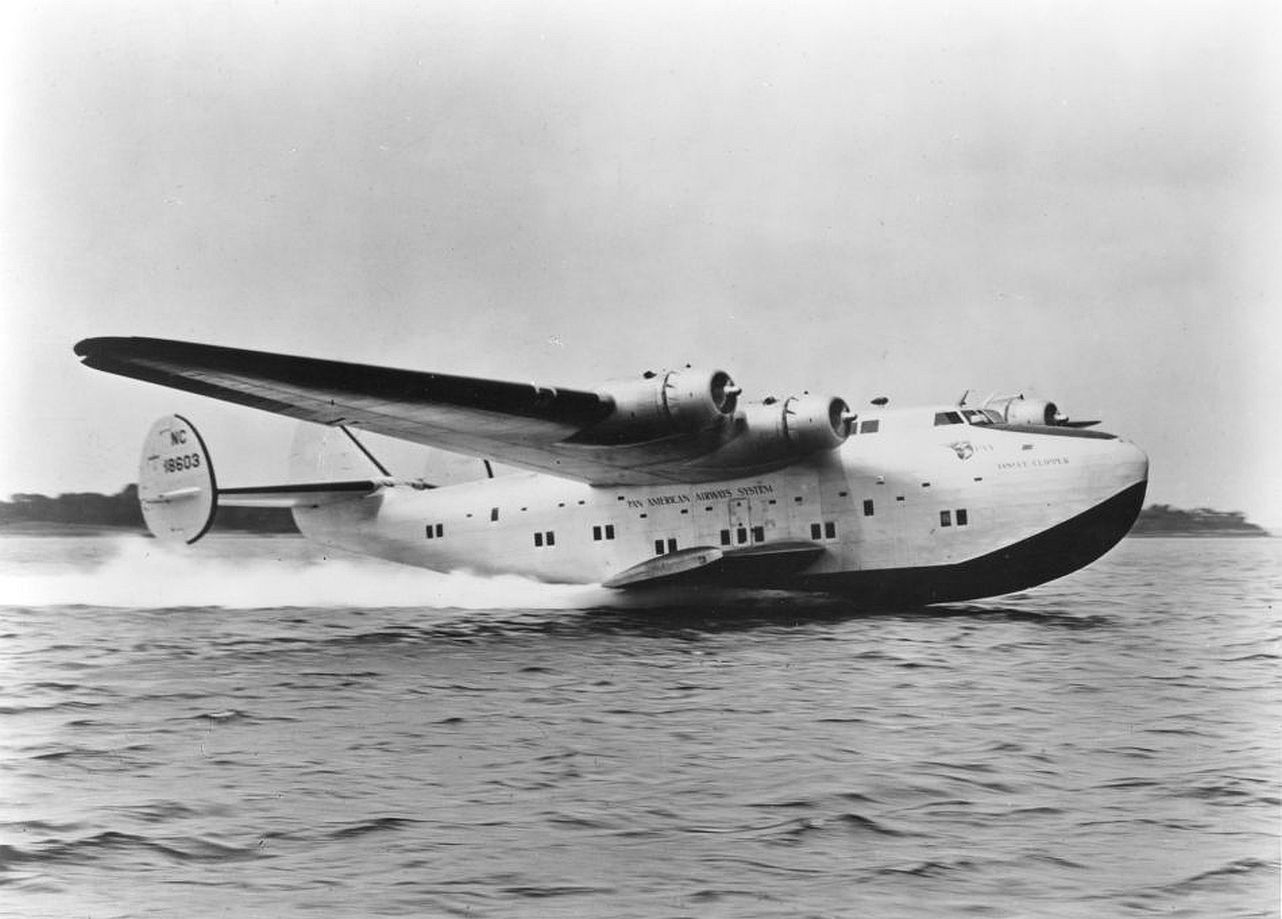
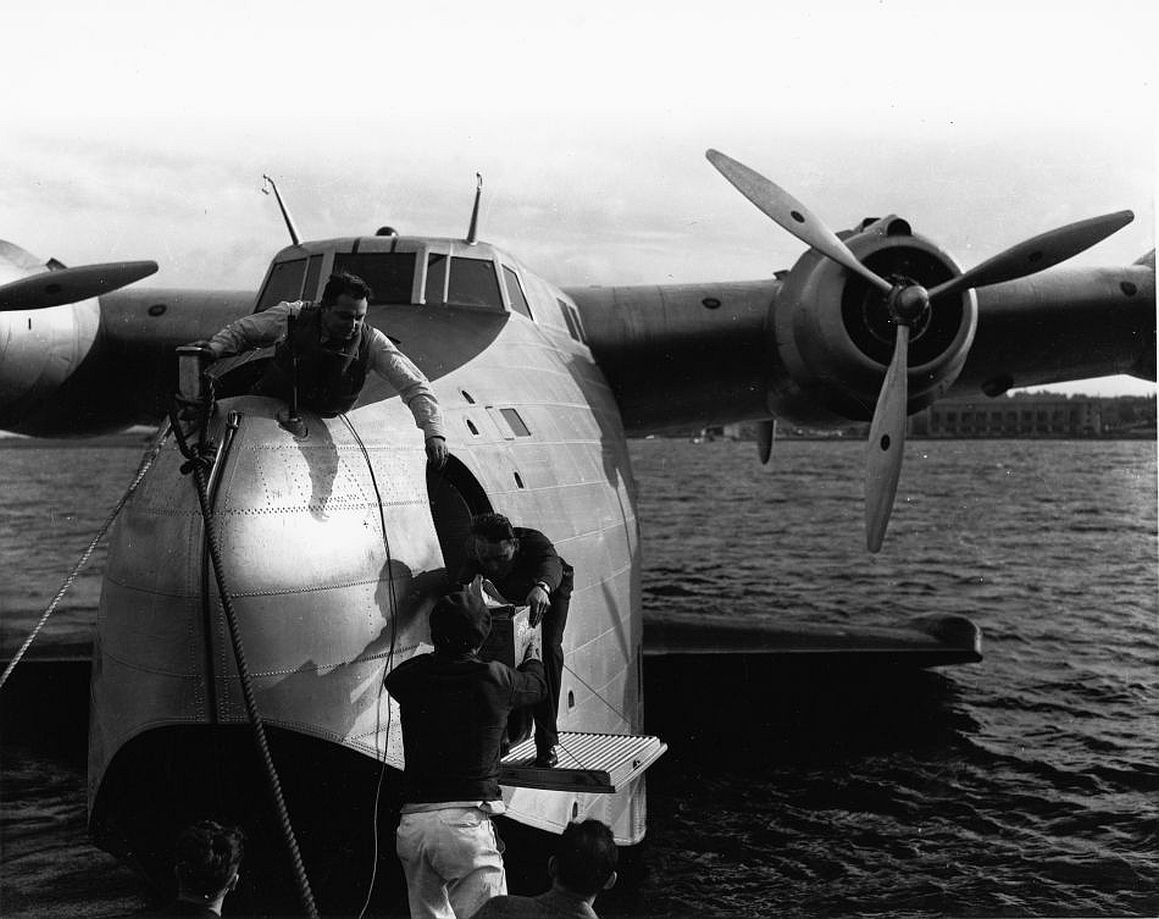
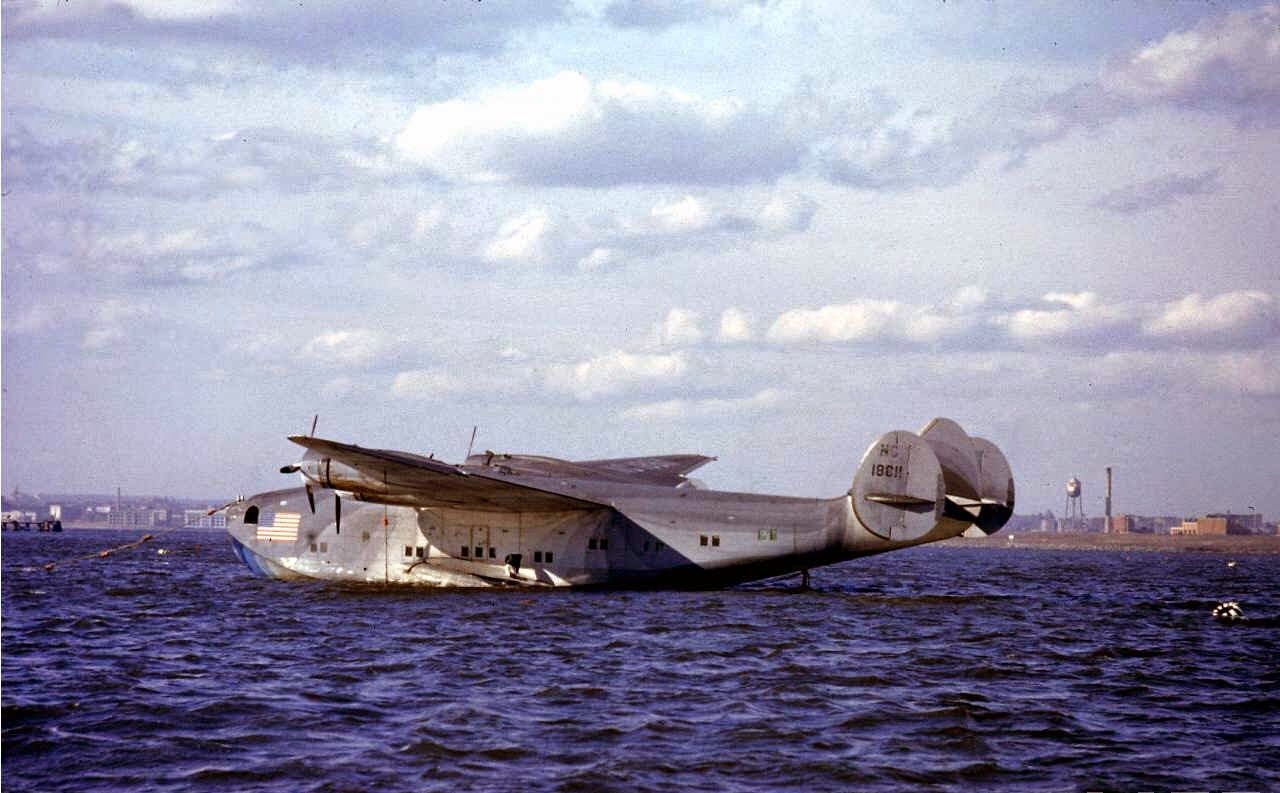
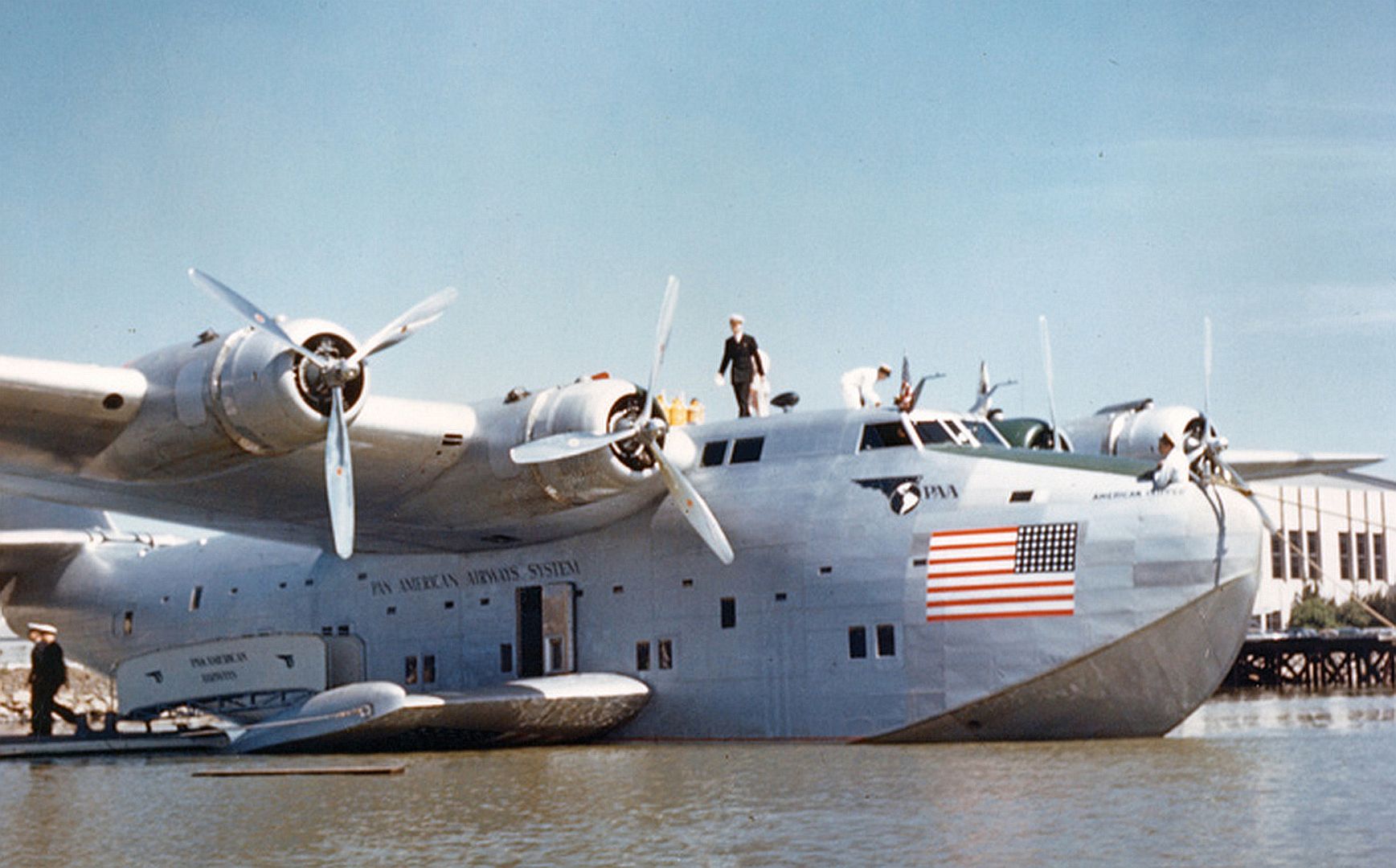
Regards Duggy.
Post a reply
- Go to Previous topic
- Go to Welcome
- Go to Introduce Yourself
- Go to General Discussion
- Go to Screenshots, Images and Videos
- Go to Off topic
- Go to Works in Progress
- Go to Skinning Tips / Tutorials
- Go to Skin Requests
- Go to IJAAF Library
- Go to Luftwaffe Library
- Go to RAF Library
- Go to USAAF / USN Library
- Go to Misc Library
- Go to The Ops Room
- Go to Made in Germany
- Go to Campaigns and Missions
- Go to Works in Progress
- Go to Juri's Air-Raid Shelter
- Go to Campaigns and Missions
- Go to Works in Progress
- Go to Skinpacks
- Go to External Projects Discussion
- Go to Books & Resources
